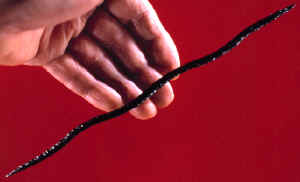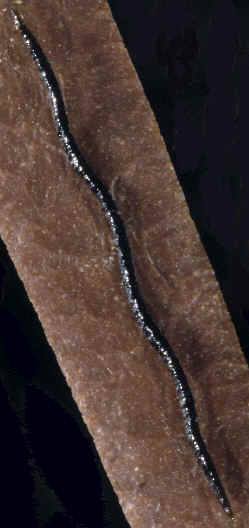CAST
#PRE-2
This delicately flaked effigy of a serpent was made from slightly
translucent black obsidian that has a slight greenish tinge on the edge.
This same variety of obsidian is found in Mexico and was used by the
Aztec culture in the Tehuacan Valley. These people were using a core and
blade manufacturing technique to produce large numbers of long narrow
blades with extremely sharp cutting edges. This snake effigy and other
similar examples were most probably made from these blades. |
|
|
AZTEC
SERPENT EFFIGY During the Late Stone Age a few societies in various locations around the world were able to expand and become culturally stable long enough to allow specialized craftsman to work and become the best at what they did, in this case flintknapping. They were probably able to pass their flint smithing skills down from father to son or to apprentices for, in some cases, several generations. Predynastic Egypt in North Africa, the Hopewell people in the Illinois River Valley and farther east, Mississippian cultures in the eastern U.S., the Mayan people of Belize & Guatemala and the Aztec in Mexico are examples of Stone Age cultures that reached a golden age of flintknapping. They not only produced flaked stone artifacts that were used in a utilitarian way but also made items for ceremonial purposes that have yet to be duplicated to this day. The Aztec culture is high on the list of Stone Age societies that produced some of the most skillfully made flaked stone artifacts in the history of the world. |
This obsidian snake effigy measures 8 1/2 inches long. It's laying on a very large Aztec blade (biface) in this picture. |

